Dealing with both chronic and acute pain can be difficult, especially if it’s incredibly intense. If you’ve ever had any sort of surgery or sports injury, you know the problem. But even the usual, small, niggling pains can be difficult to manage.
Medication is the thing that people usually turn to, but as we all know, they can cause problems of their own, including a severe addiction in some cases.
So, what can you do?
Well, there are alternatives when it comes to dealing with pain, including massages and other types of therapy – and one of the most effective is aromatherapy with essential oils.
Stick with me today to find out all about this type of therapy and find the best essential oil for pain relief.
 Essential Oils – The Essential Info
Essential Oils – The Essential Info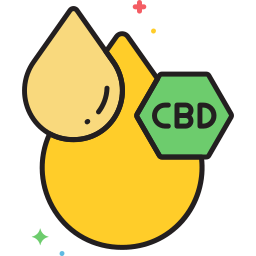 Essential Oils vs. Prescription Drugs – Benefits and Downsides
Essential Oils vs. Prescription Drugs – Benefits and Downsides The Best Essential Oils for Pain – Compared
The Best Essential Oils for Pain – ComparedThe 10 Best Essential Oils for Pain in 2020
Using Essential Oils for Pain Relief – How and When
Essential Oils for Pain FAQ
Essential Oils – The Essential Info

I expect that most of you have already heard something about essential oils before – but just in case you don’t know a lot about them, here’s a quick overview to get you started.
Essential oils are oils that can be extracted from almost any type of plant and have different beneficial effects depending not only on the plant they’re extracted from but also the part of the plant (flowers, leaves, roots, stem, etc.).
There are many different extraction methods –
Cold pressing, steam distillation, chemical distillation and so on. The extraction method will affect the composition of the oil and the benefits it provides.
The benefits of essential oils range from help with pain relief, through lifting your mood and improving concentration to easing your allergies and improving your sleep. There’s more, but too much to cover here.
Essential oils can also be used in a wide variety of ways, each with its own benefits – but I’ll cover that more in-depth later on.
When oils enter your body, they stimulate certain responses in your body, thus producing the different beneficial effects that you notice. Essential oils are completely natural, and if you use them properly, you’ll see no negative side-effects.
You usually get essential oils in their pure, undiluted form and you will have to dilute them before use. That’s why they’re usually bought in relatively small bottles, but only a few drops are needed per use.
Essential oils can be mixed into an almost infinite variety of blends in order to produce certain effects. Some essential oils can enhance the effects of others so using blends can be more effective than using single oils. You can make blends yourself or buy pre-made blends.
Almost anyone can use essential oils, and their beneficial effects have been proven time and time again in various studies.
Essential Oils vs. Prescription Drugs – Benefits and Downsides

The use of essential oils for pain management has a long history, but in recent times, prescription drugs have been used for pain relief more than anything else.
There are some doubts about the effectiveness of essential oils, and you might have them too, which is why people trust drugs more, despite the side-effects they might cause.
To help you understand the situation better, I’ll go over some of the major benefits and downsides of both drugs and essential oils when it comes to pain relief.
First, let’s take a look at prescription medication.
1Prescription Medication

-
They Have a More Focused Effect
While essential oils are great, there are some times when you absolutely need certain medication that’s designed to be laser-focused on combating your illness or particular symptoms of it. Essential oils can’t replace antibiotics, for example. In certain cases, medication is simply more efficient.
-
Your Insurance Can Cover Them
While medication can be expensive, there’s a good chance that your insurance will cover at least a portion of the cost, thus making them more affordable than essential oils are.
-
They’re Well-Regulated
There’s a bit of safety net when it comes to prescription drugs with government regulation of them, and they ensure that at least some standards are upheld during production. You can be certain that any drug that you’re getting has been through a lot of tests before it was ever available for sale.

-
They Can Cause Addiction
A lot of medication can cause you to get addicted, and if you’re looking for pain relief, you’re at even more risk. Pretty much all painkillers are addictive and the more you use them, the weaker their effect, leading you to seek stronger medication and get even more addicted. People with severe pain issues, like cancer patients, usually develop an addiction and it can take years to get rid of it.
-
Lots of Possible Side-effects
If you’ve ever opened a manual that comes with any prescription drug you’ve probably noticed that it’s extremely long. If you’ve read it, you probably noticed that around half of it is just a list of the possible side-effects that you could have from using the drug. That’s just if you use it properly though – if you mess something up, it gets even worse. Prescription drugs are incredibly dangerous, much more so than essential oils.
-
Not Natural
There’s no going around it – most drugs are made in a lab. They’re often filled to the brim with tons of synthetic chemicals or GMO products and so on. You’ll be hard-pressed to find a prescription drug that’s completely natural or even mostly natural.
-
You Can’t Always Use Them
There are a lot of restrictions on when you can and can’t use certain medication. Certain medication simply can’t be mixed with each other, for example. Other medication needs to be used on a strict schedule, or just before eating or just after eating or one hour after a meal and so on. With essential oils, there are no such restrictions.
2Essential Oils

-
Completely Natural
As long as an essential oil is organic and certified as pure, it’s completely natural with no added chemicals, unlike drugs that are mostly synthetic and loaded with all sorts of different chemicals. If you’re using an essential oil, you almost always know what you’re putting into your body.
-
No Massive Side-effects if Used Properly
While drugs have a chance of producing some side-effects no matter how you use them, essential oils won’t have any side-effects if you use them properly. There is a small chance of an allergic reaction, like with anything else, but other than that you can feel completely safe.
-
You Can Use Them With Any Other Oil
Blends of essential oils are incredibly popular and using different essential oils together is not risky at all – in fact, it can be even more beneficial than using them separately. You can mix them as much as you want, risk-free.
-
They Don’t Cause Addiction
You can stop using essential oils without any ill effects, whenever you like. There’s literally no chance of getting addicted to them, like with prescription drugs. They’re effective at dealing with all different types of pain, from arthritis to even the most intense ones like post-operative pain, so they’re a viable alternative.
-
They Always Remain Effective
No matter how much you use a certain essential oil, it will always remain equally effective. With prescription drugs, you can develop a resistance to them, which can necessitate using stronger drugs but essential oils will always remain as effective as they were when you first started using them.

-
They Can Be Expensive
While prescription medication can be expensive as well, you’ll often find that your medical insurance can refund you some of the cost or the entire cost of the medication you need. High-quality essential oils can be even more expensive than medication, and there are almost no health insurance companies that will cover their cost for you. If you want to make your own blends or diffuse the oils, the cost becomes even higher.
-
No Strict Regulations or Standards
Essential oils are not well-regulated; there’s no going around it. There are no strict standards in the industry or government regulation so you can’t always be sure that you’re getting good quality oil, especially if you’re buying them from certain companies. However, you can rest easy if you buy your oils from large companies with a long track record of good business practices.
-
Shady Business Strategies
This is not a con of the oils themselves, per se, but more of the way they’re present to you, the customer. Some companies that sell essential oils have questionable business practices, and you should try to stay clear of multi-level-marketing schemes and try to buy the oils directly, whenever possible.
The Best Essential Oils for Pain – Compared
In case you don’t have the time to sift through more detailed reviews, here’s a quick overview of some of the best products around so you can find the best essential oils for pain in a painless and quick way.
The 10 Best Essential Oils for Pain in 2021
Lavender Essential Oil
Out of all the essential oils on this list, Lavender oil is probably the most famous one. It has a wide variety of uses, from easing anxiety to helping you sleep better and pain relief is just another one of its great applications.
Lavender has been known to help with tension headaches, migraines and similar types of pains but it’s less known that it has a strong anti-inflammatory effect. That makes it useful for dealing with pain in sore muscles or relieving pain related to an injury or infection. It’s even useful for dealing with strong menstrual pain or pain during surgery.
It’s even been effective in hospital environments and in post-operative care. It’s even effective for pain relief dialysis treatments.
You can use it on its own or in blends with oils that have similar effects, to increase the potency.
NOW Foods Lavender Oil The Best Solution For Your Pain (Editor’s Pick)
—————–
NOW Foods is a well-known company making a ton of different supplements, beauty products and more while offering them at affordable prices. This oil is no different, and it comes at a highly affordable price when compared to the competition.
Despite the lower price, the quality is high here – the oil is pure and organic and stored in a well-made and perfectly sealed bottle. There’s nothing dangerous or artificial about it – just great lavender oil.
————-

- Highly affordable price for the amount
- Completely pure and organic, made from the best possible materials
- Extracted in a safe and natural manner
- Comes in a well-made, sealed bottle that won’t leak

- The smell can be too strong for some
- Doesn’t come with a dropper
While including a dropper is standard practice for most essential oil companies, don’t always expect to get on with the bottle.
Peppermint Essential Oil
Another old favorite, Peppermint oil has long been used for dealing with tension headaches as well as head pain caused by blocked airways and clogged sinuses.
However, peppermint has other uses besides that. Do you know why you get a ‘chilly’ feeling when you inhale peppermint? That’s because it contains menthol, a substance that acts as a cooling agent and thus has a positive effect on sore muscles or inflamed areas. It can also reduce the chance of getting spasms or cramps.
Recently there has also been some evidence that it can be used for help with irritable bowel syndrome as well, so it has a wider range of uses than you might think.
Peppermint Essential Oil by Essentially KateS Cleans Up Clogged Nostrils With Ease
—————–
While this peppermint oil is not made by a company with a big, lofty reputation, it’s still more than worth buying.
The price it comes at is a steal, especially when you consider that the company allows you to return the oil for any reason and get a full refund on it, no questions asked.
The oil itself is quite strong with a distinct peppermint smell – not diluted at all. The packaging is good as well so you won’t find any leaks and the oil won’t evaporate after you open the bottle.
————-

- The price is extremely affordable
- You can get a full refund on the oil
- Has a strong and pure smell to it
- The bottle it comes in is good and properly sealed

- Not for internal use at all
- Comes with a poor-quality dropper that doesn’t always work
There are not a lot of regulations when it comes to oils, and that includes internal use. Make sure that any ‘food grade’ specifications on the oils are made by an actual government agency and not the manufacturer.
Frankincense Essential Oil
While Frankincense oil is mostly known for some of its other beneficial properties and as a gift presented to Jesus at birth, it can also help significantly when it comes to pain relief.
It has been shown to help with arthritis and other similar join conditions – it relieves pain and improves mobility at the same time.
Frankincense can also help with inflammations and swelling, reducing them significantly while also helping with the pain they cause.
Traditionally it has also been used to reduce stress and tension in the muscles and is quite beneficial at making sore muscles feel better when used during a massage.
Healing Solutions Frankincense (30ml) 100% Pure, Best Therapeutic Grade Essential Oil The Oil That Everyone Should Have
—————–
Healing Solutions is well-known for its high-quality essential oils, and this bottle of Frankincense oil is no exception. This oil is well-made and highly concentrated with a strong smell to it.
The price is great for the amount and the quality on offer so you can rest assured that you’re getting some of the best oil available on the market. It’s rigorously tested, and you can check the testing information online.
————-

- Highly concentrated pure oil
- Comes at a price that’s highly affordable
- Rigorously tested and certified as organic and therapeutic grade

- The oil drip you get with it drips a bit too quickly
- The packaging is poorly made, and the caps can fall off
Great oil can easily be ruined by poor packaging. Save the bottles and drips that were good and use them whenever you get a great oil in a poor bottle.
Eucalyptus Essential Oil
Much like peppermint, Eucalyptus oil, derived from plants native to Australia and Indonesia, also contains menthol. Thus, it also has a significant cooling effect that helps clear up your airways and soothes sore muscles while reducing swelling and inflammation.
A study has found that inhaling eucalyptus had significant effects on pain reduction in people who had complete knee-replacement surgery and it lowered their blood pressure to boot.
It’s even more potent when mixed with peppermint, enhancing the effects of both oils.
doTERRA – Eucalyptus Radiata Essential Oil The Best Remedy for Blocked Sinuses
—————–
DoTERRA is a definite market leader when it comes to essential oils, and it’s not difficult to see why – their oils are highly concentrated, heavily tested and certified as completely pure and organic.
They also come in great packaging and with lightning-quick delivery.
This eucalyptus oil is no exception, and its smell is extremely strong, a testament to how concentrated it is. It’s definitely one of the best eucalyptus oils on the market right now.
————-

- The oil is highly concentrated with a strong smell
- Great packaging that doesn’t leak
- Lightning-fast delivery times
- Completely pure and organic oil

- The oil is extremely expensive
Eucalyptus oil is great for use in blends, and it’s a good idea to buy high-quality eucalyptus and mix it with some cheaper oils since it can help improve their effects without losing its own effects.
Rosemary Essential Oil
Rosemary is a plant that’s famous for its use in cooking, but rosemary oil is not far behind since it’s one of the most used oils in aromatherapy treatments. It has been proven to have significant analgesic properties and can fight both pain and inflammation.
It’s most effective when applied directly to the painful or inflamed area, preferably during a massage.
Artizen Rosemary Essential Oil Pure and Great for a Massage
—————–
While this brand might not be as well-known as some others, the oils they make tend to be quite pure and completely organic. This bottle of rosemary oil is proof of that – and you get a lot of it for a good price.
The dropper that comes with it is well-made, and the bottle itself doesn’t leak at all. The customer service from the company is good as well, and they’ll answer your questions.
————-

- Heavily tested for complete purity
- The price is good for the amount you get
- Organic and therapeutic grade
- Comes in a good package

- The smell is a bit weaker than you might expect
- It smells a bit different from standard lavender oil
While an essential oil might not smell exactly as you would expect, that’s not a proof that something was added – it might just be a result of different packaging or extraction process, and the oil can be as pure as any other.
Marjoram Essential Oil
This is another Mediterranean plant, just like rosemary, though not nearly as famous. However, it’s well-known in the area as a remedy for sore muscles, cramps, spasms, stiffness, and injuries.
The essential oil made from it is even more potent and has been proven to work well for treating muscles that have been overexerted. It works particularly well for sports injuries and the like.
The best way to use it is to apply it directly to the painful area. The oil also has a sedative effect so diffusing it when you’re trying to sleep is also a great way to use it.
Edens Garden Sweet Marjoram 10 ml The Best Solution for Insomnia
—————–
This marjoram oil comes from Edens Garden, and it’s as good as most of their other products. The oil is pure and highly concentrated, so you get all of the benefits at a cost that almost anyone can afford.
The smell you get from it lasts for quite a while, and it’s more than strong enough even when used in a diffuser.
Overall, it’s a great bottle of oil for the price, and you won’t regret purchasing it. It’s definitely one of the best pure marjoram oils on the market.
————-

- Comes at a good price that you can afford
- The packaging is well-made
- Strong smell that lasts for a while

- The oil is sadly not organic
- Doesn’t blend all that well with other oils
If you ever get an essential oil that doesn’t blend too well with others, emulsifying it might help it blend a bit better.
Clove Essential Oil
This essential oil has been used for ages as an analgesic agent and boasts strong anti-inflammatory effects due to improving blood circulation.
Besides reducing pain, this oil can boost your metabolism too, thus improving the rate at which you heal from your injuries.
You can use it in almost any way you like, and its effects will be retained. Inhaling, massage, bathing – it’s all viable and great for your body.
Now Foods Essential Oil, Clove, 4 Ounce Keeping The Flu Away
—————–
Here’s another bottle of oil from NOW Foods and it’s as good as the rest of their offerings. As with all their other products, it’s made to be affordable, and the oil comes in a large bottle.
It’s well-made and doesn’t leak, and it comes with a good drip that you can use to apply your essential oils and measure them correctly.
The oil has a strong smell, and it’s been tested extensively, so you know it’s completely pure and organic.
————-

- The price is as affordable as ever
- Comes in good packaging with a great drip
- A strong smell that can last for a while
- Tested for purity and completely organic

- The smell is a bit different than you might expect
- You can’t return it if it’s broken in transport
Always check the return policies of the companies you’re getting your oils from to stay safe and secured in case something unexpected occurs.
Turmeric Essential Oil
Turmeric oil is ancient and has been used as far back as 4000 years ago. It’s been used both in its plant form, as a spice and as an oil.
The main reason for that are its extremely strong anti-inflammatory properties. If you have swelling or an inflammation, turmeric oil is the thing to get in order to help yourself and relieve the pain you’re feeling.
Besides that, turmeric oil also has some antibiotic properties too, making it great for internal use when you’re suffering from a bacterial infection.
Turmeric Essential Oil by Plant Guru The Best Thing for Killing Bacteria
—————–
Plant Guru is one of the up-and-coming companies in the essential oil world, but they’ve already made a name for themselves and are known for high-quality oils that are as pure as possible.
This product is good proof of that, and it’s highly concentrated with a strong smell with test results to prove how pure and organic it is.
The bottle is tough and well-made, so there won’t be any leaks, and you can rest assured that your oil won’t be wasted through evaporation.
————-

- Completely pure and natural oil
- Tested extensively to make sure everything is high-quality
- The bottle it comes in is well-made to prevent leaks
- Intense scent that lasts for a long time

- The price is higher than you would expect
Save the good bottles and drips that you get with your oils – you never know when you might need them.
Thyme Essential Oil
Thyme oil has been used for a ton of different things – it was even used as anti-venom in certain cultures.
The reason for this is because it contains thymol, a substance with strong antiseptic properties that can help with inflammation and swelling. It improves circulation and cleanses your blood of certain poisons.
It’s the most effective, however, in dealing with strong menstruation pains, a condition that’s known as dysmenorrhea.
Applying it to the affected area after heating it up a bit should give you the optimal effects.
Thyme Essential Oil by Gya Labs Easily Gets Rid of Swelling
—————–
While this is not a product from a well-known company, it’s more than worth considering when you go shopping for thyme essential oils.
The oil is well-tested, made from high-grade ingredients and it seems to be completely pure and organic with an incredibly intense smell.
It comes in a tightly-sealed bottle that prevents leaks, and the price you can buy it at is more than decent for this high-quality product.
————-

- The smell is intense and vibrant
- It comes in a bottle that doesn’t leak
- Pure and organic oil made from quality ingredients
- TDecent price for what you get

- The smell doesn’t last for too long
- The drip leaks too much
If the smell of an essential oil dissipates quickly, it doesn’t mean it’s not working. The oil can continue to provide beneficial effects long after the smell disappears.
Clary Sage Essential Oil
If you’re having painful spasms and cramps, clary sage oil is probably one of the best essential oils for helping you with that. But that’s not all it’s good for – it can also soothe your skin and has strong anti-inflammatory effects.
In fact, it’s so strong that you should only use it in small amounts, occasionally since there’s a risk of overdosing on it if you use it too often and too much.
The best way to use it is by diluting it with a carrier oil and massaging it into your skin at the painful points.
Clary Sage Essential Oil by Aromis Soothe Your Sore Skin
—————–
This oil comes from a highly environmentally-conscious South African company that focuses on using local ingredients made by local farmers. Such business practices are something that most of you would want to support, I guess.
The price is reasonable all things considered, and the quality on offer warrants it. The oil is certified as completely organic and pure while the bottle it comes in is well-made and leak-proof.
Overall, it’s a great oil from a lesser-known company that’s more than worth a look.
————-

- 100% pure and completely organic oil
- The bottle is well-made, and leaks are not possible
- An environmentally sustainable option
- The price is more than reasonable

- The dropper leaks oil too quickly
- Takes quite a while to be delivered
Sometimes I’m willing to buy a product at a price that’s higher than it otherwise would be if I get to support great business practices by doing it.
Using Essential Oils for Pain Relief – How and When
There are many different ways to use essential oils, and there’s no one ‘right’ way to do it – each way has its own benefits and drawbacks that you need to consider.
If you’re not familiar with all the options, I’ll go over each of them and tell you everything you need to know – what to do, how to do it, when to do it and what to avoid doing.
1Topical Use
This is the simplest way to use essential oils, but it’s also potentially one of the most dangerous ways to use them if you’re not careful.
It’s simple, in essence – you apply two to three drops to a certain area of your body and rub it in vigorously. You can use the oil undiluted or combined with a carrier oil, in which case you can use more drops.
However, not all oils are safe to use topically, and even those that are can only be used on certain areas of your body. The most common places where people apply oils are their collarbones, hand, feet, and temples.
The places where you shouldn’t apply oils topically include your eyes, nostrils, mouth, groin, anus, and bellybutton. You also need to avoid open sores, boils, and similar areas.
Using oils in this way can be potent but it can also be wasteful and it might not produce effects that last as long as they would if you used a different method.
2Massaging
In essence, this is just a type of topical oil application, but it’s different enough that it deserves a section all its own.
This type of use involves diluting your essential oils in some sort of carrier oil
Fractioned coconut oil is particularly popular since it’s odorless and doesn’t affect the composition of essential oils.
You can usually dilute around 20 drops of oil in ½ to 1 cup of carrier oil, and then use it to massage yourself in painful spots or all over your body. Usually, it’s best to start with your feet which will get the oils into your bloodstream the quickest.
Alternatively, you could make the mixture before your next massage session and bring it to your masseuse to use it on you, if that’s something they allow. Getting a professional to rub the oils into you can be more effective than doing it yourself, especially for hard-to-reach areas like your painful back.
Just make sure, to be honest with them and inform them about the contents of the oil you’re giving them to use on you.
3Bathing
This is another type of topical use, but one that doesn’t get talked about enough – I’m going to correct that.
Now, as you probably know, oil doesn’t mix well with water – so if you just put essential oils in your bath water, you’ll end up with them floating on the surface instead of mixing. Luckily, there’s a way to get around that.
You can emulsify the oils by using an emulsifier – that way, they’ll mix with the water, and you can safely get into your bath. You can use a substance like polysorbate 20 to do that by mixing an equal amount of oil and the substance together.
Another way to go about things is by mixing around 5 to 10 drops with a tablespoon of carrier oils. This won’t make the oil mix with the water, but it will dilute them enough, so they’re not dangerous when they come into direct contact with your skin in the bath.
Remember to add the oils into the bath just before you get into it. Don’t add them beforehand or while the water is running – they’ll probably evaporate before you even get in, wasting them completely.
Notably, there are some oils that won’t be safe to use, even when diluted in a large amount of bath water or carrier oil, due to how ‘hot’ they are. This includes oregano, peppermint, cinnamon, lemongrass, basil, wintergreen, cassia and so on. Avoid using them; they can harm your skin, especially the sensitive areas.
4Cold or Hot Compress
You’ll probably already be using a compress when you have an injury, swelling or an inflammation and combining it with essential oils just makes sense.
It’s easy to do
You just need to blend 5 or 6 drops of the essential oil you want to use with a tablespoon of your favorite carrier oil, and then add it into a cup of water. You don’t need to emulsify it, but it helps.
Next, take your compress pad and soak it in water, squeeze it, then place the pad onto the painful area. Both hot and cold compresses work, but for some oils, one is better than the other – it depends. For example, a hot compress would work better for thyme oil.
You can also rub the oils directly into your skin and then place the compress on top of that – it’s a faster and simpler process.
5Diffusing
One of the most common ways to use essential oils for aromatherapy is by diffusing them in an essential oil diffuser.
Diffusers come in many different shapes and forms, and you can buy them online or in many stores around the country. They all have one thing in common – they disperse essential oils into the air so you can inhale them for aromatherapy.
This is useful because it allows you to gain the benefits of essential oils without needing to constantly apply them and they can easily be absorbed by your body. You can even get the benefits while you’re sleeping, which can help get rid of nighttime hip or back pain. As a nice bonus, your home will smell great, which can relax you and increase the effects even further.
Your pets might not like your diffusers, and the essential oils in the air might harm their sensitive noses, so you shouldn’t use them around pets especially if they can get too close to the diffuser.
The benefits gained this way can also be less focused so if you need help with a particularly painful spot, rubbing the oils into it can be a more effective option.
6Internal Use
Yes, you can use oils internally, but it’s still a bit of a controversial topic, especially when it comes to which oils can be used that way and which can’t.
Some people will tell you it depends on the purity of the oil, and only the purest oils can be used internally, but that’s not exactly true. Some oils are dangerous for internal use no matter what, and some can even be more dangerous in their purest form.
Essential oils are incredibly concentrated, and just one drop of chamomile essential oil can easily be the equivalent of 20 to 30 bags of chamomile tea. Does that sound safe?
Oils that are labeled as ‘food grade’ or ‘food safe’ by the FDA are ones you could consider completely safe to use internally, but you still shouldn’t go overboard with them.
You should also try to dilute them when using them internally and shouldn’t drink them undiluted. This means that you’ll probably have to emulsify them if you want to dilute them in some sort of water-based drink or you can drink them diluted in carrier oil.
If you feel pain, burning or irritation in your throat when drinking the oils, stop using them immediately. It’s not a ‘sign that it’s working’ it’s a sign that it’s hurting your sensitive insides.
For oils that you’re not sure about you should consult a medical professional just to be safe, especially if you’re already on some sort of medication or recovering from an illness or some other condition.
Definitely don’t let your children use essential oils internally, even in small amounts. They can be even more dangerous for them then they can be for an adult.
Essential Oils for Pain FAQ
Conclusion
As you can see, essential oils are great tools for helping with your pain and a viable alternative to using prescription drugs. Not all of them are equally effective, but the best ones can be more than an adequate substitute.
But, which one is the best of the best, you might be wondering?
I can only offer my opinion on the matter, but I personally prefer using lavender oil, the all-time favorite. The best one out there, in my opinion, is the NOW Foods Lavender Oil, and I use it all the time.
You can’t go wrong with lavender since it’s good with everything and has so many great and strong effects.
If you disagree or just have a question to ask or an opinion to share, comment below and I’ll see you next time!
References
- Raskovic A, Milanovic I, Pavlovic N, Milijasevic B, Ubavic M, Mikov M (2015) Analgesic effects of rosemary essential oil and its interactions with codeine and paracetamol in mice [Online] Available from: https://www.ncbi.nlm.nih.gov/pubmed/25635991 (Accessed Mar 10, 2021)
- www.arthritis.org (2018) Indian Frankincense [Online] Available from: https://www.arthritis.org/living-with-arthritis/treatments/natural/supplements-herbs/guide/indian-frankincense.php (Accessed Mar 10, 2021)
- Yang SJ, Purum K, Sun SM, Jeong-Min L, Hyo-Keun K, Geun HS (2013) Effect of Eucalyptus Oil Inhalation on Pain and Inflammatory Responses after Total Knee Replacement: A Randomized Clinical Trial [Online] Available from: https://www.ncbi.nlm.nih.gov/pmc/articles/PMC3703330/ (Accessed Mar 10, 2021)
- Shaheen EL, Heather S, Deborah T (2016) The Effectiveness of Aromatherapy in Reducing Pain: A Systematic Review and Meta-Analysis [Online] Available from: https://www.ncbi.nlm.nih.gov/pmc/articles/PMC5192342/ (Accessed Mar 10, 2021)
- Lee MS, Lee HW, Khalil M, Lim HS, Lim HJ (2018) Aromatherapy for Managing Pain in Primary Dysmenorrhea: A Systematic Review of Randomized Placebo-Controlled Trials [Online] Available from: https://www.ncbi.nlm.nih.gov/pubmed/30423839 (Accessed Mar 10, 2021)
- Sut N, Kahyaoglu-Sut H (2017) Effect of aromatherapy massage on pain in primary dysmenorrhea: A meta-analysis [Online] Available from: https://www.ncbi.nlm.nih.gov/pubmed/28438280 (Accessed Mar 10, 2021)
- Hilda YKK, Noor P, Sri W, Imam DM, Leny L (2017) LAVENDER (LAVANDULA ANGUSTIFOLIA) AROMATHERAPY AS AN ALTERNATIVE TREATMENT IN REDUCING PAIN IN PRIMIPAROUS MOTHERS IN THE ACTIVE FIRST STAGE OF LABOR [Online] Available from: http://belitungraya.org/BRP/index.php/bnj/article/view/159 (Accessed Mar 10, 2021)
- Melti S, S Zuriati (2020) The Effect of Rose Aromatherapy on Reducing The Post-Operative Pain Scale in Aisyiyah Padang Hospital, West Sumatera, Indonesia [Online] Available from: http://www.ijalsr.org/index.php/journal/article/view/42 (Accessed Mar 10, 2021)
- Rainer S, Nick S, Tim S (2018) Medical aromatherapy revisited—Basic mechanisms, critique, and a new development [Online] Available from: https://onlinelibrary.wiley.com/doi/full/10.1002/hup.2683 (Accessed Mar 10, 2021)
- Yasser AK (2018) Inhalational aromatherapy for post-operative pain: The disturbed evidence [Online] Available from: https://www.pulsus.com/scholarly-articles/inhalational-aromatherapy-for-postoperative-pain-the-disturbedevidence-4660.html (Accessed Mar 10, 2021)
- Jung TK, Christine JR, George AF, Abhishek P (2007) Treatment with Lavender Aromatherapy in the Post-Anesthesia Care Unit reduces Opioid Requirements of Morbidly Obese Patients Undergoing Laparoscopic Adjustable Gastric Banding [Online] Available from: https://www.researchgate.net/profile/Alex_Bekker/publication/5950817_Treatment_with_Lavender_Aromatherapy_in_the_Post-Anesthesia_Care_Unit_reduces_Opioid_Requirements_of_Morbidly_Obese_Patients_Undergoing_Laparoscopic_Adjustable_Gastric_Banding/links/540f0cb90cf2d8daaad08bc1.pdf (Accessed Mar 10, 2021)
- Niaz H, Ali AH (2011) Lavender essence for Post-cesarean pain [Online] Available from: http://docsdrive.com/pdfs/ansinet/pjbs/2011/664-667.pdf (Accessed Mar 10, 2021)
- R Nikjou, R Kazemzadeh, M Rostamnegad, S Moshfegi, M Karimollahi, H Salehi (2016) The Effect of Lavender Aromatherapy on the Pain Severity of Primary Dysmenorrhea: A Triple-blind Randomized Clinical Trial [Online] Available from: https://www.ncbi.nlm.nih.gov/pmc/articles/PMC5405632/ (Accessed Mar 10, 2021)
- Ghods AA, Abforosh NH, Ghorbani R, Asgari MR (2015) The effect of topical application of lavender essential oil on the intensity of pain caused by the insertion of dialysis needles in hemodialysis patients: A randomized clinical trial [Online] Available from: https://www.ncbi.nlm.nih.gov/pubmed/26051566 (Accessed Mar 10, 2021)
- Shulan S, Jinao D, Ting C, Xiaochen H, Erxin S, Li Y, Kaifeng W, Yue Z, Jianming G, Sheng G, Pei L, Dawei Q, Yuping T (2015) Frankincense and myrrh suppress inflammation via regulation of the metabolic profiling and the MAPK signaling pathway [Online] Available from: https://www.ncbi.nlm.nih.gov/pmc/articles/PMC4556964/ (Accessed Mar 10, 2021)
- Jung TK, Micheal W, Germaine C, David S, Michael S, Deborah MA, Amber AG, Alex YB (2006) Evaluation of Aromatherapy in Treating Postoperative Pain: Pilot Study [Online] Available from: https://onlinelibrary.wiley.com/doi/abs/10.1111/j.1533-2500.2006.00095.x (Accessed Mar 10, 2021)
- Ann B (1998) Aromatherapy in arthritis: A study [Online] Available from: http://search.proquest.com/openview/7a2dd05233ca4d957526193c76694cda/1?pq-origsite=gscholar&cbl=30130 (Accessed Mar 10, 2021)
- Armaiti S, Soheyla M, Faezeh S, Faraz M (2014) Effects of Inhalation of Lavender Essential Oil on Open-heart Surgery Pain [Online] Available from: https://www.ncbi.nlm.nih.gov/pmc/articles/PMC4232792/ (Accessed Mar 10, 2021)





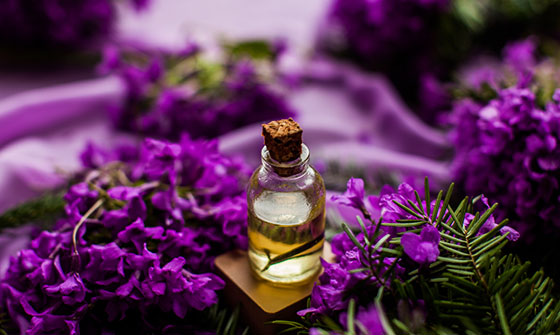

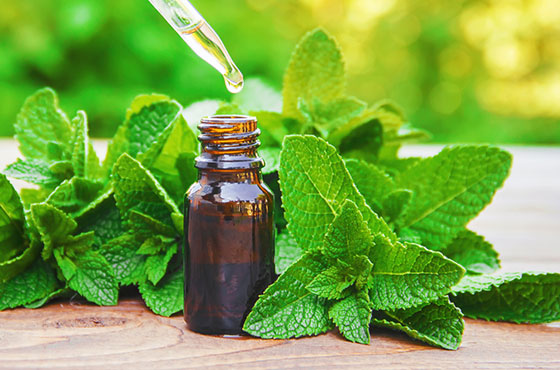

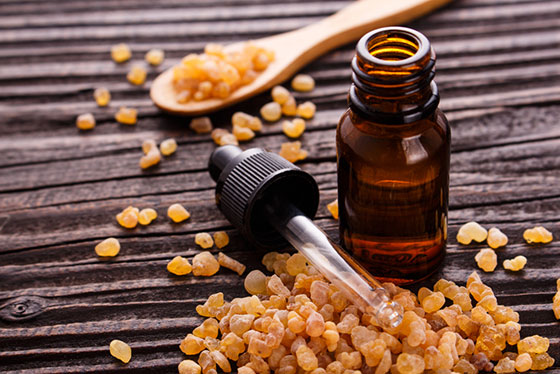

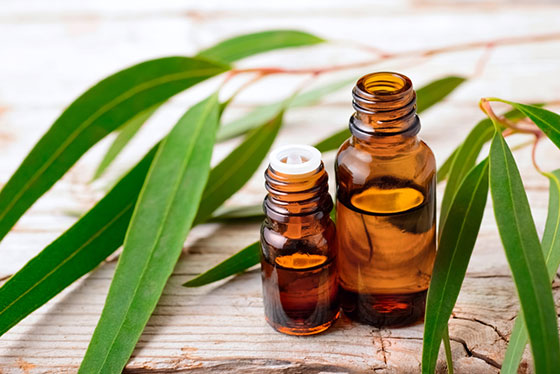

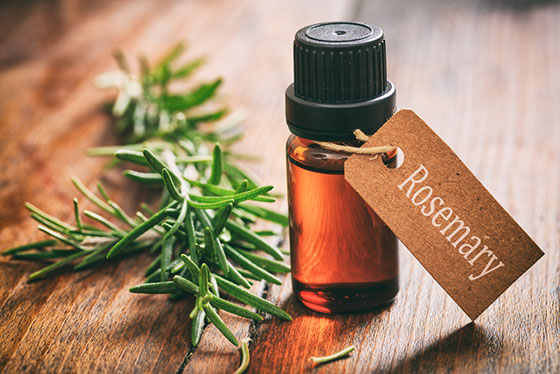

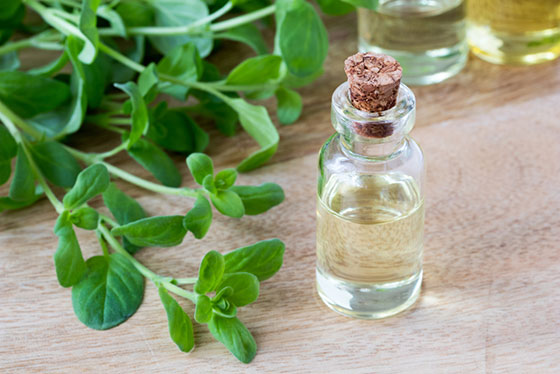

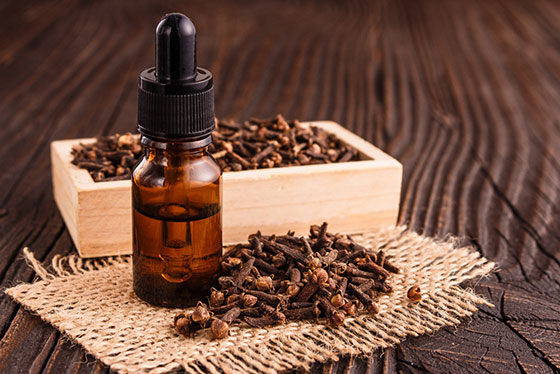

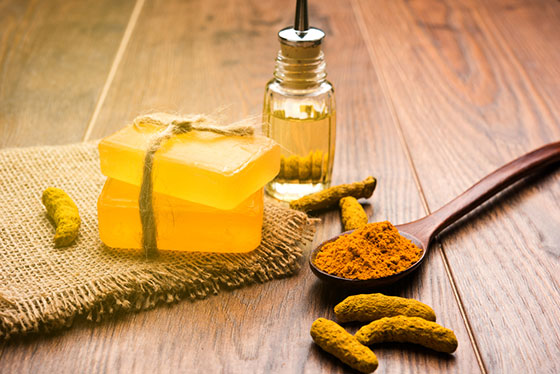

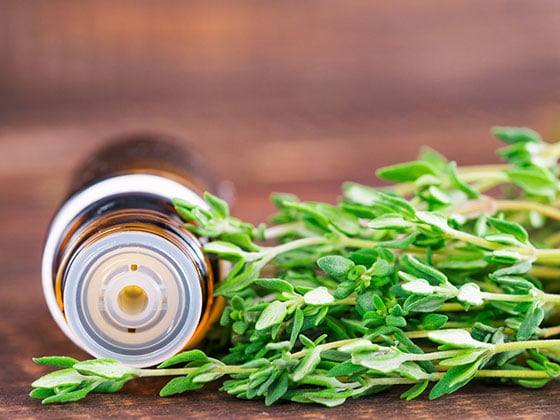

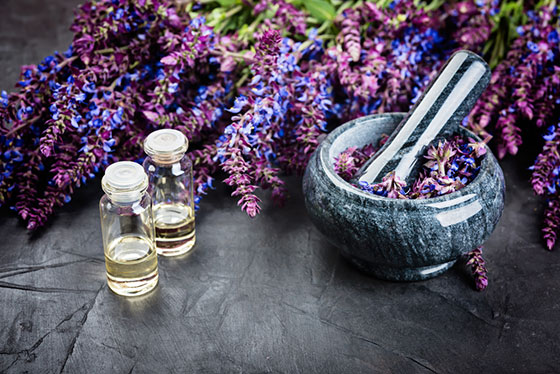





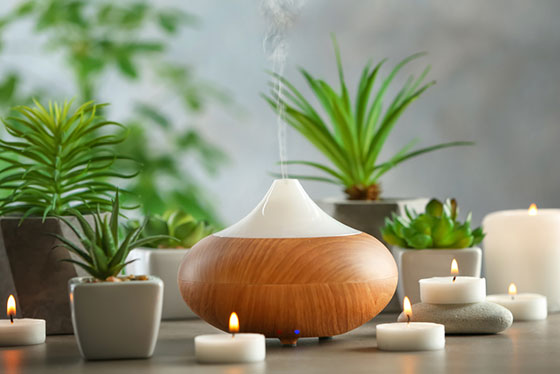










This is interesting to know the different types of essential oils and also knowing their benefits is a good advantage as well.
Thank you for your comment!